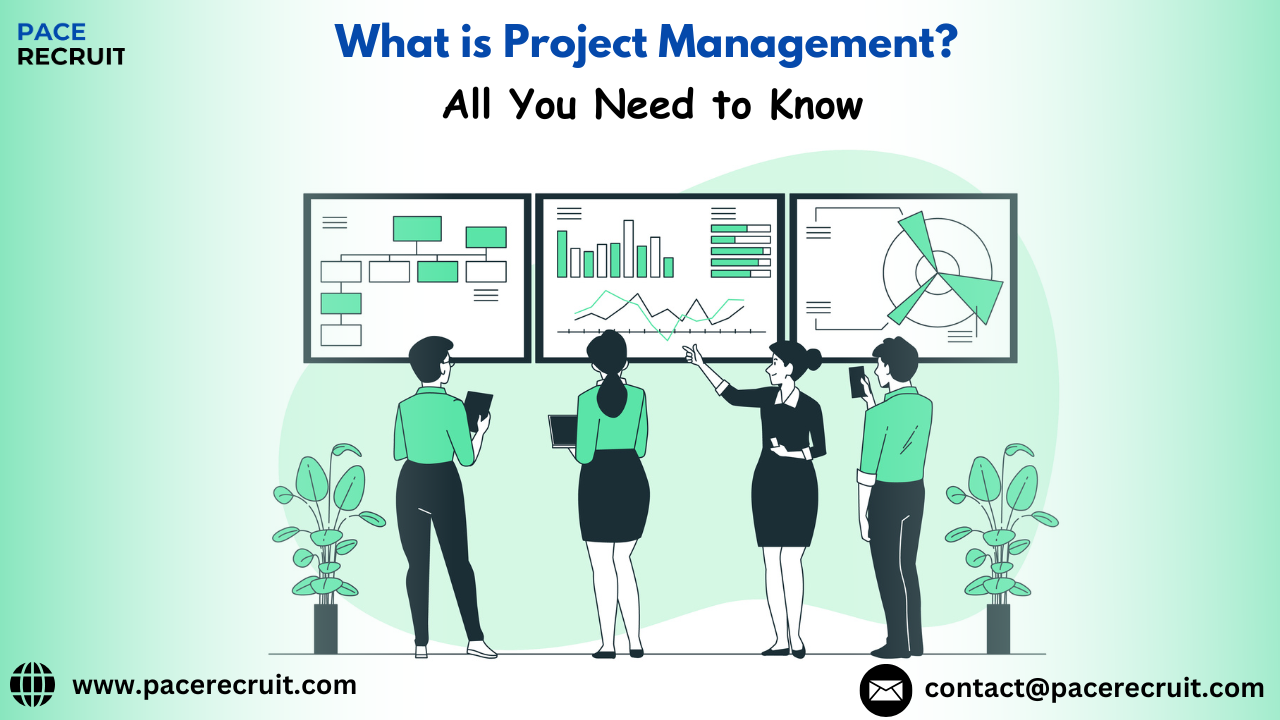What is Project Management: Understanding It
What is project management? In simple words, project management applies processes, methods, skills, knowledge, and experience to deliver specific goals with defined constraints. The most commonly involving constraints are usually about time, budget, scope, and quality. Structured methodologies ensure a project manager achieves objectives with an effective and efficient manner.
Table of Contents
Why is Project Management Important?
Project management, today, cannot be overstated in today’s fast-moving business world. Proper project management ensures the following deliverables:
Projects are delivered in time. They do not involve costly delays in delivery.
They use resources in a judicious way and avoid overspending.
Clear communication and collaboration are ensured among stakeholders and lead to good outcomes.
Achieving Objectives: Proper planning and execution are ensured in order to meet strategic objectives that contribute to organizational success.
Key Components of Project Management
1. Goal Setting
Setting Goals in a Project could be seen as the first step to any project’s achievement. A clear set of goals is formed, then translating that to the project base. It is opposed to that model: SMART goals stand for Specific, Measurable, Achievable, Relevant and Time-bound, which is considered as clear and focused.
2. Task Scheduling
Task Scheduling: This is a planning activity that helps in scheduling by time. Therefore, every activity will have a beginning and ending date, thereby bringing the project deadline. Tools that facilitate this one are Gantt charts and calendars that remind teams of deadlines.
3. Team Management
Team Management is one of the critical success factors for a project. Coordinating team efforts, assigning responsibilities, and promoting teamwork increases productivity. Clear communication and motivation keep the team on track with project goals.
4. Progress Monitoring
Progress Monitoring monitors the progress made and points out potential bottlenecks. Periodic updates and performance metrics keep the project on track. Dashboards and reports provide real-time insights into the status of the project.
5. Stakeholder Collaboration
Stakeholder Collaboration. It is defined as all people involved in a project at any point during the life cycle of the project. Open communication channels, regular meetings, and feedback systems are used to avoid miscommunication.
Project Management Frameworks
Agile Project Management
Agile project management has the characteristic of flexibility and teamwork, providing step-by-step development. Its implementation is really handy in rapidly changing environments when the requirements alter constantly. Its methodologies consist of sprints; that is, the group commits to and delivers small improvements during fixed cycles.
Kanban Methodology
The Kanban Methodology uses visual boards to represent workflows. It allows the team to work on tasks effectively by limiting the number of work-in-progress items. It increases transparency and reveals bottlenecks in real time.
Scrum Framework
The Scrum Framework is one of the Agile parts that deals with short cycles called sprints. Here, roles are defined: Product Owner, Scrum Master, Development Team, all of which eliminate ambiguity of responsibility as well as enable an efficient workflow, so there could be no reasons for procrastination.
Project Management Processes
All Project Management Procedures are steps providing a clear approach from initiation toward closure. Examples of most prevailing ones include
Initiation-definition that captures the purpose together with the definition scope of any project
Planning: This is an all-rounded plan that considers timelines, budgeting, and risk assessment.
Execution: This refers to the execution of the plan and efficient utilization of the resources.
Monitoring and Controlling: Follow-through as well as altering of actions
Closure: closure of deliverables as well as the assessment of the project
Benefits for Effective Project Management
Improved Productivity: smooth processes save time and human effort.
Cost Efficiency: Resource allocation helps in preventing wastage.
Risk Mitigation: Proactive planning helps prevent possible issues from arising.
Improved Communication: Well-defined channels prevent miscommunication.
Better Quality Outputs: Conformity to standards produces better deliverables.
Discover how PACE Recruit helps you find top Project Management talent:
PACE Recruit is dedicated to connecting organizations with top-tier project management professionals. Our recruitment process outsourcing (RPO) services are ready to fulfill the specific requirements of each clients, to streamline the talent acquisition process and guarantee high quality fare. With focus on efficiency and excellence, PACE Recruit is your strategic partner in building a strong project management team. For more information or to discuss the needs of your recruitment, don’t hesitate to get in touch with us at https://www.pacerecruit.com/contact-us/
FAQs About What is Project Management:
1. What does project management truly aim for?
Its main objective is projects need to be completed in time and within the budget resulting in the project deliverables that have been identified and meet stakeholders’ expectations.
2. Tell me about the difference between Agile and Traditional Project Management?
In simple terms, Agile is adaptive and iterative while traditional ones are rigorous or linear.
3. Which are the usual tools of a project management team?
Some of the very popular ones for task scheduling, collaboration, and progress tracking include Trello, Asana, Microsoft Project, and Jira.
4. Why is stakeholder collaboration important?
Engagement of stakeholders will align, reduce conflict, and even build trust in advance; all these form a precursor to positive project outcomes.
5. What are the problems in project management?
Commonly, there occur scope creep, resource constraints, unclear goals, and communication gaps.
Mastering these principles and practices will allow organisations to consistently succeed in their projects and drive growth effectively.

